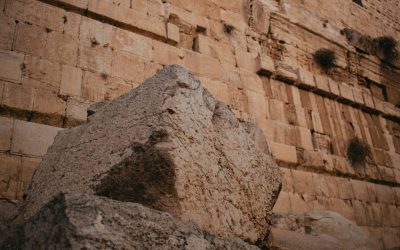Introduction
The front doors of our churches are flung open, not to welcome newcomers, but due to the mass exodus of the faithful flooding out. Recent statistics are troubling: Catholics of all ages are increasingly disconnected from the Church. It forces us to confront the stark reality that our ability to pass on the faith is currently insufficient.
Despite these challenges, an unexpected trend offers hope. Even though efforts to attract and retain a new generation of Catholics have broadly been a profound failure, a growing number of young Catholics are turning back to traditional teaching and practices. They are embracing what many of their peers and even older Catholics may dismiss as rigid or outdated.
This renewed focus on tradition offers hope but also invites scrutiny. Are the criticisms against traditionalism entirely unwarranted? Orthodoxy (right belief) and orthopraxy (right practice) are essential, but are they enough on their own? In striving for traditionalism, are we still missing crucial elements of tradition?
Derived from the Latin ‘traditio,’ tradition means passing on. It is more than just an individual’s adherence to doctrine and practice. It means a living transmission of faith, especially across generations. It is an ongoing, vital encounter with Jesus Christ that transforms lives, inspiring an urgent and active engagement in His mission.
I contend that to effectively meet the spiritual hunger of our time, we need to rediscover the forgotten aspects of tradition. Our failure isn’t just poorly applying some practical methodology in evangelization and catechesis. Instead, I would argue that we have lost sight of formation and personal responsibility as a key component of tradition. Hidden in its roots lies the transformative power that made Catholicism such a compelling force in the world. We need to fully embrace the whole meaning of tradition so we can offer an authentic and credible witness to the next generation.
Understanding Tradition
Tradition includes a broad range of elements, including both the teachings of Jesus Christ and the lived practices of Christianity—prayer, liturgy, and sacraments. At its core it is a living transmission of the Gospel, essential for the continuity of the Catholic faith.
Apostolic Tradition refers to the truths revealed directly by God, culminating in the life and teachings of Jesus Christ. While some of these truths are documented in the Bible, others were orally transmitted to the Apostles. Both forms, Scripture and oral teaching, are equally important in passing down the fullness of the faith.
This Apostolic Tradition cannot receive any additions or changes, but our understanding of it can deepen under the guidance of the Church’s Magisterium, its teaching authority. Reducing Tradition to mere documents, without the living interpretation of the Magisterium, risks making ourselves arbiters of divine revelation.
Ecclesial tradition includes the collection of disciplines, practices, and structures that comprise the various expressions of the Catholic faith throughout history. One might think these are inconsequential, but they include important elements like our legal structure, liturgical rites, monastic life, and other major aspects of lived Christianity. While these can evolve, they always retain an element of stability and point back to the unchanging core of Sacred Tradition, the deposit of faith.
“The Tradition here in question comes from the apostles and hands on what they received from Jesus’ teaching and example and what they learned from the Holy Spirit . The first generation of Christians did not yet have a written New Testament , and the New Testament itself demonstrates the process of living Tradition. Tradition is, to be distinguished from the various theological, disciplinary, liturgical, or devotional traditions, born in the local churches over time. These are the particular forms, adapted to different places and times, in which the great Tradition is expressed. In the light of Tradition, these ‘traditions’ can be retained, modified or even abandoned under the guidance of the Church’s Magisterium.” – CCC 83
Three Sources
The concept of tradition in early Christianity actually emerged from three distinct cultural contexts: Jewish, Greek, and Roman. Each one offered a unique interpretation of tradition, shaping how early Christians understood and practiced their faith.
- The Jewish heritage emphasized the transmission of practices. The focus was on faithfully passing down ritual observances such as the Eucharist, baptism, and prayer from one generation to the next. Christianity inherited the importance of maintaining continuity in religious life through both written scripture and oral tradition.
- The Greek heritage emphasized tradition as a dynamic interaction with a system of ideas. It shaped the development and deepening of doctrinal teachings, forming what we now refer to as the “deposit of faith.”
- The Roman heritage added an element of legal possession or stewardship for what was passed on. This introduced an important new element: personal responsibility for receiving and passing on the faith.
Each of these cultures contributed foundational elements to the concept of tradition in early Christianity. However, the Roman heritage of personal responsibility–an ownership of one’s faith–is particularly critical and often overlooked when tradition is reduced to mere apostolic and ecclesial elements.
I propose that tradition should be understood in three senses, not just two: the Apostolic, Ecclesial, and Personal. To sustain a living tradition, we must return to a personal responsibility to pass on that faith. In this way tradition is like a three legged stool. If one element is missing, it cannot stand.
In practical terms, tradition must share lived practices and pass on a coherent system of ideas. But that is not enough. Built into Christianity is the obligation to form each new generation as “response-able,” people able to respond to the demands of the Gospel. Our Christian communities must consistently support men and women as they grow into individuals with the capacity to take on the full weight of our calling as disciples of Christ.
1. Jerusalem: Identity & Practice
For Jewish Tradition
Ritual Practices: In the Jewish world, tradition is “masoret” (Hebrew מָסוֹרֶת), which conveys a strong emphasis on ritual practices and communal liturgy. Tradition was not just a transmission of historical ideas but deeply tied to daily religious practices that formed the backbone of Jewish life.
Covenant: Jewish tradition emphasized ritual observance, law, and fidelity to the rules and practices handed down generation to generation. This was the way they maintained fidelity to their covenant with God. These practices were often ritualized (ex. Sabbath observance, dietary laws, and festivals). Observing these rituals meant faithfulness to God.
Identity: For Jews, their identity was found in their covenant with God. So ritual as a means of covenant loyalty was deeply tied to communal identity. By continuing in the prescribed rituals, each generation identified themselves as faithful participants of the covenant. Tradition was as much about lived experience as it was about teachings. Passing them down wasn’t just about concepts, but performing these acts and then inviting others to participate. This formed the essence of community life and identity.
Orality and Written Law: A key distinction in Jewish tradition was the interplay between Written Torah (the formal text, e.g., the Pentateuch) and Oral Torah (the body of additional interpretations, explanations, and rulings passed on orally and later written down in the Talmud). Oral tradition had an important role in interpreting how the law was practically lived out.
In Christian Thought
In the early Church, Jewish influences had a deep impact in how traditions and practice were established. Acts like the Eucharist, baptism, and structured prayer were not just teachings but liturgical practices handed down from the apostles. Participation in these rites became fundamental to Christian identity, much like Jewish rituals formed the core of the covenant community in the Old Testament.
Paul speaks of maintaining paradosis (tradition) in 1 Corinthians 11, where the Lord’s Supper (Eucharist) is not just a doctrinal teaching but a ritual action that must be practiced in the community according to the tradition received (“I handed on to you what I also received…”). This emphasis on tradition as ritual reflects the Jewish background—Christian tradition was not only a teaching but also practices.
2. Greece: Dynamic Transmission
In Greek Culture
Dynamic Ideas: In Greek culture, particularly in philosophical and educational contexts, the term παράδοσις (paradosis) describes the transmission of knowledge, ethics, and teachings. Greek paradosis also included ongoing interpretation.
Living Tradition: Tradition in the Greek context was seen as a fluid, evolving body of wisdom. Think of the transmission of teachings within the Platonic or Aristotelian schools, where each generation built upon their predecessors’ lessons, adapting them to new circumstances and insights. This dialogical tradition involved questions, debate, and critical thought as integral methods of maintaining and passing down the body of ideas. Students were expected to learn and contribute to and refine the tradition.
Communal Transmission: This process of handing down knowledge was often highly communal. Learning occurred in close-knit groups where traditions were orally transmitted, and discussion or disputation was encouraged to deepen understanding. This transmission wasn’t a unilateral, rigid transfer but something that could transform as context and understanding grew.
In Christian Thought
Early Christianity, particularly in its Greek-speaking contexts, carried forward this idea of paradosis as living tradition—a dynamic interaction between the transmitter of the faith (e.g., apostles or church leaders) and those who received it. Traditions were taught by example (the lived witness of apostles) as much as through teaching. There was an assumption that understanding the faith had to take root in the heart, not just be understood by the mind. And it had to be continually applied to new contexts while remaining faithful to the core Gospel message.
This approach is evident in early Patristic writings, where theology was not merely fixed like a legal entity. Greek Fathers like Irenaeus, Clement of Alexandria, and Origen drew on Hellenistic traditions of thought, regarding the reception of tradition as involving contemplation and deepening understanding over time. Faithful transmission involved engagement, interpretation, and application of this living tradition to new theological and cultural realities.
3. Rome: Ownership & Responsibility
In Roman Society
Legal Context: In Roman society, the term traditio (from tradere, “to hand over”) was initially rooted in legal and practical contexts, reflecting the formal transfer of property, rights, or authority. However, this idea extended beyond mere legal transactions to encompass the notion of personal responsibility for what was received.
Responsibility and Stewardship: In the Roman context, the recipient of any traditio took on formal responsibility for what was transferred. This stewardship emphasized personal accountability for one’s inheritance, emphasizing the protection and proper use of what was handed down.
Cultural Transmission: Beyond legal transactions, the Roman concept of tradition also extended to cultural and societal roles. Traditions and customs were handed down with a clear sense of responsibility and continuity. Romans saw the transmission of traditions as an obligation to preserve and practice them faithfully in daily life, ensuring the continuity and integrity of their cultural and societal values.
In Christian Thought
When the concept of tradition went from the Greek paradosis to the Latin traditio, it naturally took on some of the Roman connotation. Tradition gained even more emphasis on guarding and faithfully preserving what had been entrusted to the Church. The apostles “handed over” the deposit of faith (depositum fidei), and the Church, through bishops and leaders, had the responsibility to preserve this faithfully, like safeguarding an inheritance or estate that would eventually be passed on to the next generation.
This approach of legal inheritance influences how apostolic succession is understood in Catholicism, where the authority and tradition that bishops and popes inherit from the apostles are entrusted to them as guardians. They are not free to alter it. They have a certain ownership as stewards, which means both authority and responsibility.
However, reducing Roman traditio to apostolic tradition alone overlooks the personal responsibility at Christianity’s heart. An overemphasizing of the institutional form of traditio can miss the key aspect of faith as a personal response to God.
It is critically important to see Roman traditio as more than static preservation of ideas. It is, above all, the personal response to taking on, living, and passing on the faith. It means becoming people who are response-able.


